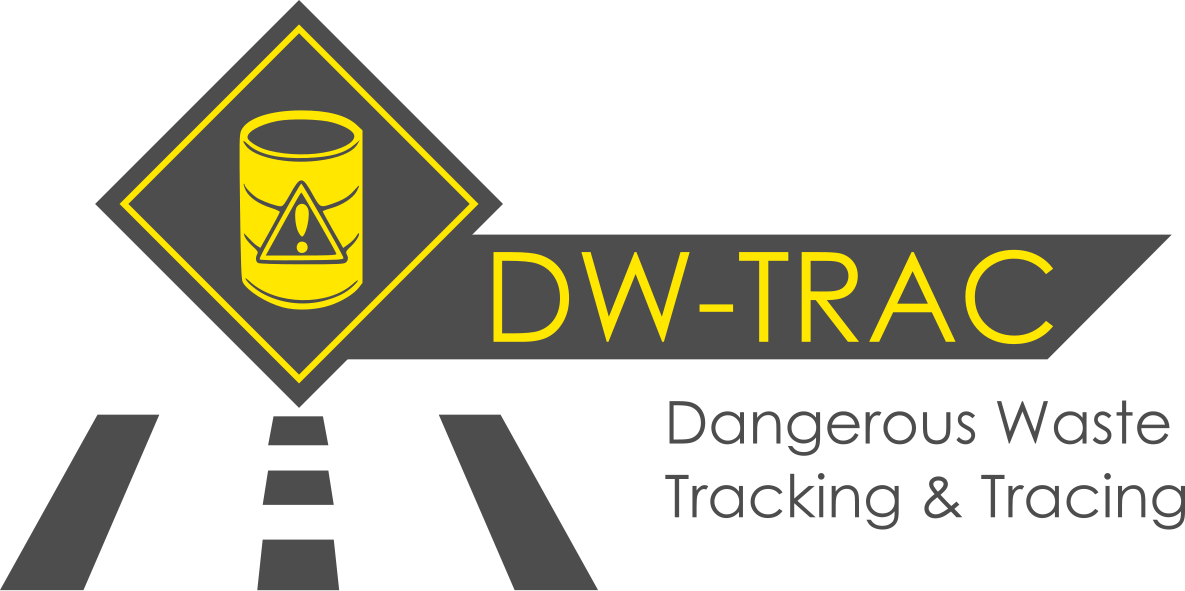
Objectives of the service
Cross-border shipment of dangerous waste creates specific challenges as every country has implemented different notification procedures and diverse monitoring tools to be used.
The DW-TRAC service will:
- Simplify the notification of the sender, transfer and receiver governments by leveraging existing electronic interfaces; the user will only have to enter the information once
- Monitor the shipment of hazardous waste to avoid illegal activities
- Provide the sender with a documentation that certifies that the waste was transported according to legal rules and recovered or disposed at the right place
- Ensure the transport organisation and the concerned authorities that the transport follows the defined route and timing while allowing a real-time tracking of the position and route
- Provide higher flexibility by allowing the governmental authorities to access the transport location and documentation in real-time
- Allow emergency service to access detailed transport lists in case of an accident to allow a preparation of the first responders in advance based on the information which type of dangerous waste was loaded (relying on European eCall)
DW-TRAC may also be used with non-dangerous waste, if administrations and customers benefit from the service’s potential.
Users and their needs
The DW-TRAC service targets following customer segments:
- Waste producers who have hazardous or problematic waste that needs to be disposed or recycled
- Waste managers (organising the transports, monitoring, creating notifications and reports)
- Local, regional and national governmental authorities that need to control waste transports
- Police, emergency services in case of accidents
The main pain points are:
Waste producers
- Time intense transport registration and confirmation process with authorities
- Extensive documentation requirements to be adhered to
- Lack of traceability of transports
Waste Managers
- Time intense transport registration and confirmation process to authorities
- Extensive documentation requirements to be adhered to
- Precise routing required as no deviation from predefined routing allowed
- Transport vehicle is blocked by regulatory inspections of cargo
- No consolidation of waste quantities after registration possibility
Governments
- Lack of transparency as no real-time information about the transports is available
- A lot of time wasted on control points for regulatory inspections of cargo
Emergency Services
- Authorities and emergency forces are not aware of the exact composition of cargo shipments
- Complete transport documentation only in the driver's cabin
- In case of an accident: loss of time and increased risks for rescue operations involving dangerous goods vehicle
DW-TRAC is open to customers all over Europe.
Service/ system concept
DW-TRAC addresses all these needs with two services:
Tracking as a Service
DW-TRAC’s Tracking as a Service supports the real-time tracking and tracing of waste transports with following main services:
- Notification and Information of all entities involved in a waste transport, including sender, transporter, receiver and authorities
- Information exchange based on the e-CMR standard
- Real-time tracking and monitoring of the waste transports
- Access to real-time information by authorities
- Means to inform authorities of changes in the transport (route, loaded goods) in real-time, including short term acknowledgment by authorities
Operations as a Service
Operations as a Service is a completely integrated service that takes over the entire waste operations from the customers over the full cycle from the waste collection, transport, up to the waste disposal and recycling. Such a service is already provided by Kuehne+Nagel Integrated Logistic for customers in the Aerospace, the Automotive, High Tech, Industrial and Pharma & Healthcare sectors.
The new DW-TRAC service includes the transportation, the recycling or disposal through the Kuehne+Nagel specialist partners as well as the financial settlement, all in compliance with European waste regulations. Kuehne+Nagel controls, registers and transports the waste of their customers according to their needs, covering all waste types.
The Operations as a Service concept provides the customer a One-Stop-Shop with one single partner covering transport, recycling and billing, increasing the visibility, regulatory compliance and swift certification of recycling. Operations as a Service covers the complete order and fulfilment cycle for waste transports as shown in the following illustration:

Space Added Value
The DW-TRAC service use both satellite navigation and satellite communication:
- Satellite navigational services for tracking the position of the truck carrying the waste.
Satellite navigation is essential for the service as the real-time tracking of the transporter is the main feature of the service. This tracking allows the sender, receiver and transporter organisation as well as the competent authorities to check in real-time that the transport follows the planned route.
- Satellite communication is used for the transmission of location and additional information between the truck and the DW-TRAC service centre in areas without terrestrial mobile connectivity.
One of the key features of the service is the continuous monitoring and tracking of the transporter, which requires a nearly uninterrupted communication link between the transporter and the DW-TRAC service centre. In some rural areas terrestrial mobile networks are still weak or even not available. Therefore, providing a satellite communication connection as backup to the terrestrial mobile network is an essential part of the service offer.
Current Status
An operational service concept, sellable in a light and a fully loaded way has been established. The envisaged service was validated during a small scale proof of concept and well received by engaged potential customers and by attendees at trade fairs like Pollutec. DW-TRAC was perceived as a win for all involved entities: shippers, receivers and competent authorities, as it increases visibility and control over the supply chain. The commercial implementation and roll-out has been planned, discussions with all stakeholders are ongoing.
Prime Contractor(s)
Subcontractor(s)





